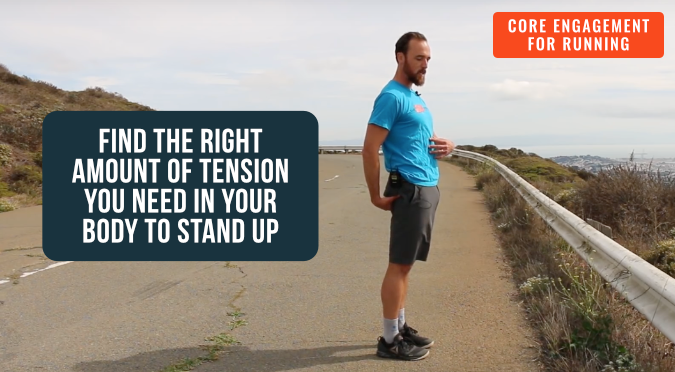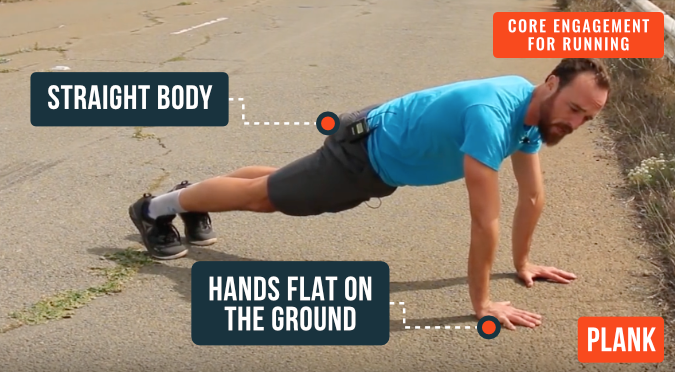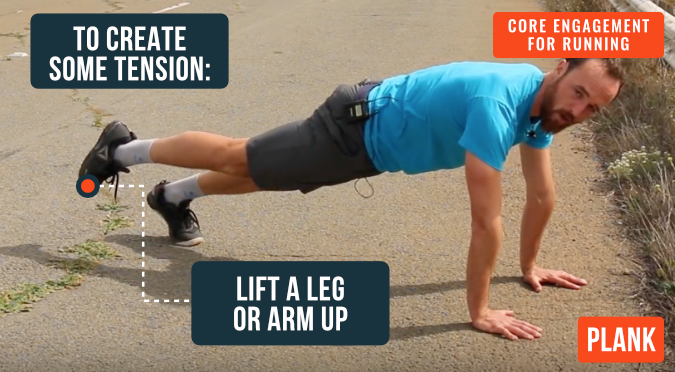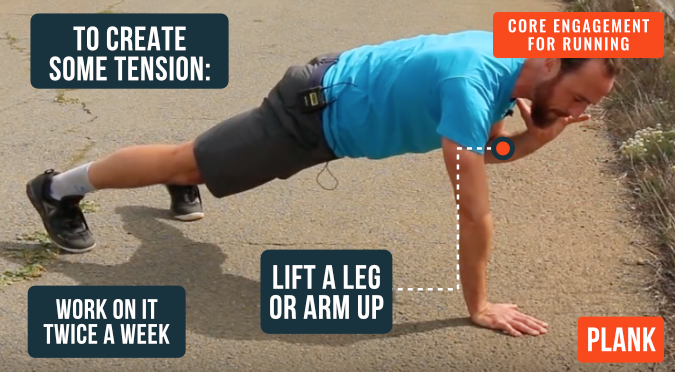How to Keep Your Core Engaged While Running
Learn how to keep your core engaged while running to find better form, avoid injuries, and maximize your performance on two legs.

Learn the secret to efficient and powerful running by learning how to keep your core engaged. The essence of a strong, sustainable run lies not just in the legs but in the powerhouse of your body—the core. Engaging your core effectively can transform your running experience, boosting your performance and protecting you from injuries.
In the world of running, 'engaging your core' is more than just a buzz phrase—it's a skill that can elevate your running technique. Whether you're sprinting, tackling a long-distance route, or navigating challenging terrains, the role of a well-engaged core is paramount. It's the central link that connects your upper body strength with the power of your lower limbs, creating a harmonious synergy that propels you forward with greater efficiency and less effort.
In this guide, we delve into the dynamics of core engagement for runners. We'll explore why it’s essential, how it affects your running form and efficiency, and, most importantly, provide you with practical exercises and strategies to master this vital aspect of your running technique.
How Does Core Engagement Affect Your Running?

When we talk about the core, we're referring to the muscles in your abdomen, lower back, hips, and pelvis. These muscles work together to stabilize your spine and pelvis, providing a foundation for all movement, including running.
Impact on Running Form and Efficiency
- Stabilization and Balance: A strong, engaged core keeps your torso upright and balanced when you run. This stability is crucial for maintaining proper running form, especially when fatigued. It prevents excessive swaying or rotation of the torso, which can lead to inefficiency and injury.
- Power Transfer: An engaged core acts as a bridge between your upper and lower body. It ensures that the power generated from your legs is not lost through a weak midsection. This transfer of energy makes your stride more efficient and powerful.
- Injury Prevention: A well-engaged core supports your spine, reducing the likelihood of lower back pain – a common complaint among runners. It also minimizes the risk of overuse injuries by ensuring that the load of running is evenly distributed across your muscles rather than placing undue stress on your joints.
- Breathing Efficiency: Core muscles play a significant role in breathing, especially during intense activities like running. A strong core supports your diaphragm, facilitating deeper and more efficient breathing. This can improve oxygen delivery to your muscles, enhancing endurance and performance.
- Varied Terrain: Running on uneven or hilly terrain requires additional core strength for balance and stability. A strong core helps you navigate these challenges with greater ease and less risk of injury.
- Long-Distance Running: In endurance running, maintaining a consistent, efficient form is key. Core strength plays a vital role in this, supporting your posture and reducing the overall toll on your body over many miles.
- Sprinting and Short-Distance Running: In shorter, faster runs where bursts of speed are essential, a powerful core enables quick, explosive movements and rapid directional changes.
- Endurance: A strong core allows you to maintain good form throughout your run, even as fatigue sets in. This endurance not only helps in maintaining pace but also reduces the energy expenditure required to keep you moving, allowing you to run longer with less fatigue.
- Speed: For sprinters and those looking to improve their speed, a strong and engaged core is essential. The explosive power necessary for quick starts and fast sprints relies heavily on a solid core to generate and transfer force effectively.
How to Keep Your Core Engaged

The plank position is a simple way to use gravity to force the body into response.
A solid plank position should directly mirror how your body looks when you run:
- Head is neutral.
- Butt and belly squeezed.
- Shoulders dropped away from the ears.
- Lats pulled down.
- Knees and feet stacked under the hips.
An engaged core guarantees these details to stay in place.
The moment it relaxes, things fall apart.
So here’s the drill:
- You’re going to find a plank position.
- Hands slightly wider than shoulder’s width apart.
- Wrists directly under the shoulders.
- Butt and belly squeezed.
- Feet squeezed together.
- Hips directly parallel to the ground.
- Head neutral.
- From here you’ll hold 20-30 seconds.
Repeat your QUALITY plank hold 3-5 times, with a 30-45 second rest between.
If this is fairly easy, here are ways you can up the intensity:

- In your plank, take one leg off the ground.
- Or take one arm off the ground.

- If still controlled, try taking one leg AND the opposite arm off the ground for the duration of the hold.
You’ll repeat for the same amount of time, for the same amount of rounds.
You want to find a version that challenges your core’s max amount of engagement for the entire 30 seconds.
For best results: complete this plank workout twice per week!
Core Engagement For Running: How To Take Control

Now that you know what your max core engagement for running feels like, you can feather out from it in your running.
Dialing back the engagement to meet your needs is a lot easier than trying to dig up core strength that you don’t have in the first place.
If you’re running a 200 meter sprint, your body should be in high gear, max tension.
If you’re running a flat 5 mile run, dial it back to something in the middle.
If you’re running up a long hill in the middle of your 7+ mile run, find a higher level of tension to support you up the hill, and then dial it back once you hit your downhill.
There should never be an instance when the core is completely turned off.
It’s your engine, so use it to the best of your abilities!
Engage Your Core (and Everything Else)
Core engagement is just one element of running. For sticking with us to the end and learning more about how to leverage your run, strength, and mobility training, check out our running training programs. It covers various running training programs, starting from beginner running, injury prevention, marathon training, and a lot more…
